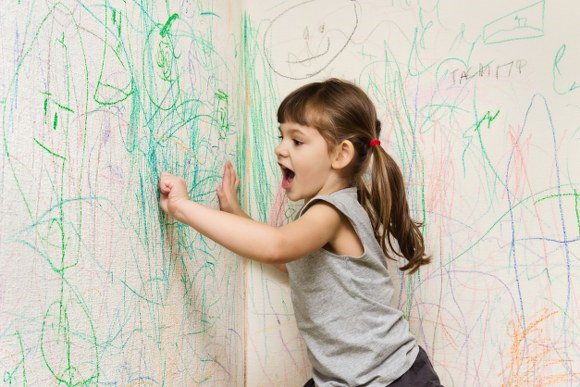How to Clean Dirty Walls
Posted on 09/02/2016
Easy Ways to Clean Your Dirty Walls

Cleaning dirty walls at home may seem like a challenging task, but it’s actually quite easy, though sometimes a bit time-consuming. Whether part of your regular home cleaning schedule or an attempt to say goodbye to stubborn stains, cleaning your walls will leave a bright room behind, so it is well worth the effort. Wall cleaning techniques and materials used will depend on whether you have used paint or wallpaper on your walls.
Tip 1: Paint or wallpaper, always ditch the dust first!
Make sure to remove cobwebs and any loose dust before making the walls wet. The fastest and easiest way to do so is to use a vacuum cleaner extension wand and brush head.

How to Clean Painted Walls
Start by assessing the type of paint used on your walls. While flat, matte, satin, and eggshell paints are generally not washable, glossy enamel and semi-gloss paints, on the other hand, allow for repeated washing. To determine how to proceed further, choose a patch of wall in a hidden area and wash it with the cleaning solution you’ve prepared for the task. If you notice water marks after drying then you better consider professional cleaning services or even a coat of paint. If the patch test goes well and the paint holds up well, you are good to go. Now it’s time to choose the right cleaning solution for the job.

For normally soiled walls, always start with the gentlest materials possible. In this case, add a sufficient amount of dishwashing liquid to a bucket of warm water. In case of very dirty walls, you'll have to prepare a stronger solution, such as 1 cup ammonia, 1/2 cup vinegar, and 1/4 cup baking soda added to 1 gallon of warm water. Dip the sponge into the bucket of cleaning solution, and rub the wall gently with a circular motion. Fill up a second bucket with clean water and use it for rinsing. Work in small areas, and after washing, finish by drying with a clean, soft cloth.
Tip 2: Bottoms Up
To avoid drips always wash walls from the bottom up. If drips run down when the wall is still dry and dirty, they will cause muddy stains which will be tough to remove. Don’t worry about dripping onto cleaned surfaces. If that happens, swipe it quickly with a damp sponge.

How to Clean Wallpaper Walls
Because of their patterned design, most wallpaper is great at hiding dust, dirt and stains. Since wallpaper often adorns walls for years, maintaining it in a clean state should be a regular part of your house cleaning procedures. Most wallpaper types can be cleaned occasionally. However, it’s always wise to read the manufacturer's advice first. Wallpaper comes in different textures and coatings, so stay on the safe side by following the written guidelines to ensure that it gets clean without being damaged.

Tip 3: Never use abrasive cleaners on wallpaper, as the abrasive particles may scratch the wallpaper's coating.
- Uncoated wallpaper. To clean this type of wallpaper, get a dry sponge. It will remove dirt without making the paper wet. Rub it lightly against the wall to remove dust and dirt.

- Washable wallpaper. This type of wallpaper is scrubable and quite durable. To maintain it in a good condition, dip a soft cloth or sponge in a bucket of cleaning solution (lukewarm water and a small amount of dishwashing liquid). Use dry cloth to absorb excessive moisture after rinsing. Do the patch test first to make sure it won't damage the coating or paper. Don't let the paper get too moist and don’t scrub too hard. Another idea to remove fingermarks or smudges from wallpaper is rubbing them with a traditional gum eraser. Do it gently to avoid removing the paper. There is also a variety of commercial wallpaper cleaners to choose from.
Now that you know how to properly clean dirty walls, it won't seem like such a daunting task.

